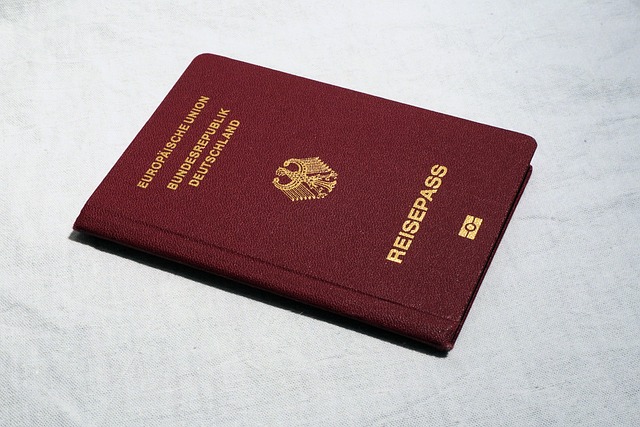In the dynamic UK culinary landscape, translation services play a pivotal role in localizing cookbooks and guides for a diverse global audience. These services ensure that regional cuisines, cultural nuances, and ingredient availability are accurately represented in international markets, fostering inclusivity among food enthusiasts of all backgrounds. By adapting recipes to suit dietary restrictions, respecting cultural symbolism, and choosing taste-sensitive phrases, translation goes beyond language barrier breaking to preserve culinary traditions. Visual elements like iconic food images enhance communication, while marketing strategies targeted at specific demographics leverage social media and visual content to engage diverse readers. The future of UK cookbook translation looks bright, with advancements in technology and a growing emphasis on cultural sensitivity driving growth and ensuring the accessibility of authentic British cuisine worldwide.
In today’s diverse culinary landscape, understanding local tastes and cultural nuances is paramount. Localized guides for diverse audiences play a pivotal role in bridging cultural gaps and enhancing the gastronomic experience. This article explores the intricacies of UK cookbooks and culinary guides translation services, delving into the need for localized content, diverse audience definitions, translation roles, cultural adaptations, visual design, marketing strategies, successful case studies, overcoming challenges, and future trends.
- Understanding the Need for Localized Culinary Guides in the UK
- Defining Diverse Audiences: A Multifaceted Approach
- The Role of Translation Services in Cookbook Localization
- Adapting Content for Cultural Sensitivity and Taste Preferences
- Visual Elements and Design Considerations for Localization
- Marketing Strategies for Reaching Target Demographics
- Case Studies: Successful Localized Cookbook Projects
- Overcoming Challenges in Translating Culinary Concepts
- Future Trends in UK Cookbooks and Culinary Guide Translation
Understanding the Need for Localized Culinary Guides in the UK

In the diverse culinary landscape of the UK, understanding the need for localized guides is paramount. With a vibrant mix of cultures and traditions, the country boasts a vast array of regional cuisines that reflect its rich heritage. However, for non-native speakers and those unfamiliar with local tastes, navigating this culinary tapestry can be daunting. Localized cookbooks and culinary guides bridge this gap, offering not just recipes but an immersive experience into the heart of UK cuisine.
Translation services play a crucial role in making these guides accessible to diverse audiences. Professional translators ensure that cultural nuances are preserved while conveying the essence of each dish accurately. By providing UK cookbooks and culinary guides in various languages, they foster inclusivity, enabling food enthusiasts from all backgrounds to appreciate and participate in the country’s culinary festivities, whether it’s a cozy dinner at home or exploring bustling food markets.
Defining Diverse Audiences: A Multifaceted Approach

Defining diverse audiences is a multifaceted approach that requires understanding the unique needs, languages, and cultural contexts of different groups. In the UK, this means catering to a wide range of individuals from varied ethnic backgrounds, age groups, and socioeconomic statuses. For instance, when creating culinary guides or cookbooks, it’s essential to consider not only translation services for recipes but also the adaptation of ingredients and cooking methods to suit diverse dietary restrictions and cultural preferences.
Localizing content for diverse audiences in the UK involves more than just linguistic translation. It entails recognizing that a “one-size-fits-all” approach rarely works, especially when it comes to food and culinary practices deeply rooted in specific cultures. Thus, effective localization requires engaging with experts and community members who can provide insights into traditional recipes, cooking techniques, and the symbolism of food within their respective communities, ensuring that guides are not only accurate but also culturally sensitive.
The Role of Translation Services in Cookbook Localization

Translation services play a vital role in localizing cookbooks and culinary guides for diverse audiences, ensuring that recipes and culinary traditions are accurately conveyed across different languages and cultures. When adapting UK cookbooks for international markets, professional translation goes beyond mere word-for-word substitutions. It involves understanding cultural nuances, ingredient availability, and regional cooking styles to maintain the essence of each dish.
These services not only translate text but also help in adapting measurements, ingredient lists, and cooking techniques to align with local practices. For instance, a UK cookbook might use imperial measurements, while its US counterpart would convert to metric units. Translation experts ensure that these adjustments are seamless and user-friendly, allowing readers from various backgrounds to recreate recipes with ease.
Adapting Content for Cultural Sensitivity and Taste Preferences

When localizing guides for diverse audiences, especially in the UK, adapting content for cultural sensitivity and taste preferences is paramount. This involves understanding and respecting the unique culinary traditions and preferences of different ethnic groups. For instance, when creating UK cookbooks or culinary guides, it’s crucial to avoid stereotypes and ensure authentic representation. Local flavors, ingredients, and cooking styles should be showcased accurately, reflecting the diversity within the UK’s food culture.
Translation services play a significant role here, not just for language conversion but also for cultural adaptation. Professional translators with knowledge of both source and target cultures can help refine content to resonate with specific audiences. This includes choosing appropriate phrases, idioms, and recipes that cater to local tastes while maintaining the integrity of the original guide. By doing so, these localized resources become more inclusive and valuable to a broader readership across the UK.
Visual Elements and Design Considerations for Localization

When localizing guides for diverse audiences, particularly in the realm of UK cookbooks and culinary guides, visual elements play a crucial role in effective communication. The design considerations should embrace cultural nuances while maintaining the aesthetic appeal of the original content. Using iconic food images and illustrations relevant to the target region not only enriches the guide but also aids translation services in conveying accurate and culturally sensitive information.
For instance, incorporating traditional UK dishes like fish and chips or a Sunday roast within the visuals can resonate better with local readers compared to generic culinary icons. These visual cues help bridge cultural gaps, ensuring that non-native speakers understand the content at a glance. Moreover, consistent color schemes and layout designs across different language versions strengthen the overall user experience, making localized guides more accessible and engaging for all audiences.
Marketing Strategies for Reaching Target Demographics

In the competitive world of UK cookbooks and culinary guides, reaching diverse audiences is key to success. Marketing strategies must be tailored to resonate with specific demographics for maximum impact. For example, when targeting young urban professionals, digital marketing channels such as social media platforms and food blogs can be highly effective in showcasing recipes and cooking techniques that align with their lifestyle. Visual content, including high-quality images and short videos, often captures the attention of this demographic, encouraging engagement and shares.
Translation services play a vital role in expanding reach beyond English speakers. With a diverse population in the UK, offering guides in multiple languages ensures inclusivity and accessibility. This not only caters to minority language groups but also appeals to tourists and expatriates who value local culinary knowledge in their native tongue. Effective translation goes beyond word-for-word equivalence; it captures cultural nuances, ensuring that cooking instructions and ingredient lists are clear and practical for the intended audience.
Case Studies: Successful Localized Cookbook Projects

In recent years, localizing cookbooks and culinary guides for diverse audiences has become a significant trend in the publishing industry, particularly in the UK. Case studies of successful projects highlight the importance of cultural sensitivity and linguistic accuracy when adapting recipes and food-related content for new markets. One notable example is the series of UK cookbook translations that aimed to capture the essence of regional British cuisine for international readers.
These projects involved not just translating text but also adapting ingredients and cooking methods to suit local availability and culinary preferences. Professional translation services played a crucial role, ensuring that the flavor and spirit of each region’s cuisine were preserved accurately. The result was a collection of guides that not only provided authentic recipes but also educated readers about the unique food cultures across the UK, making them popular choices among both local and global audiences interested in culinary exploration.
Overcoming Challenges in Translating Culinary Concepts

When localizing guides for diverse audiences, especially in the culinary realm, one of the significant challenges is translating abstract concepts and unique British food terminology accurately. Traditional translation tools might struggle with idiomatic expressions and regional dishes that have no direct equivalents in other languages. For instance, conveying the subtleties of “afternoon tea” or “fish and chips” requires more than word-for-word translation; it demands cultural understanding.
UK cookbook and culinary guide translators need to be adept at capturing these nuances to ensure a meaningful transfer of knowledge and taste experiences. This often involves collaborating with native speakers, food critics, and chefs who can provide insights into the culinary language and its context. Such collaborations guarantee that the translated guides not only stick to the literal meaning but also convey the essence of British cuisine, making them accessible and appealing to international readers.
Future Trends in UK Cookbooks and Culinary Guide Translation

The future of UK cookbooks and culinary guide translation services is poised for significant growth, driven by a rising demand for authentic cross-cultural culinary experiences. With the UK’s diverse population and increasing global connectivity, there’s a growing need to localize recipes and cooking instructions to cater to various linguistic backgrounds. Advanced translation technologies, such as machine learning and AI, are expected to play a pivotal role in this trend. These tools can not only expedite the translation process but also ensure greater accuracy in conveying culinary nuances, from ingredient substitutions to cooking techniques.
Furthermore, there’s a growing emphasis on cultural sensitivity and preservation of regional culinary traditions. Translation services will need to go beyond word-for-word equivalents and capture the essence of each dish’s cultural significance. This involves not just translating text but also adapting recipes to suit local ingredients and dietary preferences, ensuring that UK cookbooks and guides remain relevant and appealing to a diverse audience worldwide.
The localization of guides, particularly culinary ones, for diverse audiences in the UK is a dynamic field that caters to a rich cultural mosaic. By understanding the unique needs and preferences of various demographics, and leveraging translation services along with culturally sensitive adaptations, UK cookbooks and culinary guides can reach new heights. Effective marketing strategies tailored to target demographics ensure these localized resources not only find their intended audience but also enrich the culinary landscape for all. With ongoing advancements in translation technologies and a growing appreciation for cultural diversity, the future of UK cookbook and culinary guide translations looks promising, promising to connect communities through shared meals and experiences.
